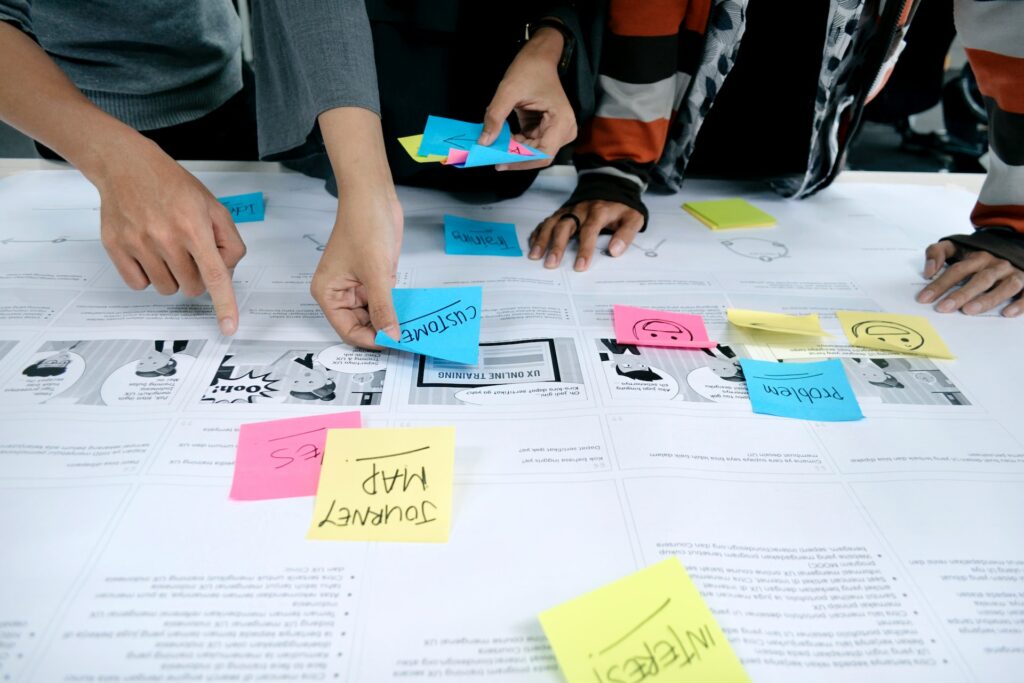At a company forum the other day, the lecturer, when talking about customer engagement software, said to his audience that “it revolves around developing an integrated platform that helps management in sales enablement to deliver a better customer experience.” Someone asked, “I’m confused; how does it help me do that?” The lecturer answered, “It redirects your focus to target the products and services to meet the right customer needs at precisely the right time.” Someone else responded, “Oh. I thought that’s what our customer relationship management tools were supposed to do?”
Yes, it’s true; they are. That’s where the confusion kicks in and where this article chips in to explain the crucial differences you need to know on how both of them impact the customer experience (CX).
MarTech Landscape Supergraphic depicts thousands of technologies crisscrossing one another, overlapping, and confounding the mind. However, when you divide them out, they flow into two significant categories – Customer Relationship Management (CRM) and Customer Engagement Platforms (CEP). Understanding the difference is vital, because it helps you understand which works better for your company’s scope and operational scale.
What is CRM and who does it help?
In a nutshell, CRM solutions converge on improving how businesses manage what they already know about their customers or clients. So, the essence of CRM technologies is to accumulate, sort, and deploy data toward determining how effectively sales and marketing in the company interact with customers. In other words, it involves assessing if they optimize customer interaction and support resources.
From when CRM made its debut in the 1990s, we can safely say that it has become established as a mature school of thought revolving around tried and trusted methods. It covers a broad spectrum designed to throw a bright light on customer transactional records to help teams centrally control, manage, and springboard off customer relationships (as they emerge) to create new opportunities and close marketing gaps.
So how does CRM come into play most of the time in practical terms?
The answer is simple. It does so by:
- Customizing sales and service presentations and conversations
- Moving away from a generic to a specific (customized) approach
- “Treating different customers differently” – coming at us under various names (e.g., “personalized selling”)
However, the only way to know that it’s genuinely a CRM is when the information at hand guides you to deal with each client (in a B2B situation) substantially different from any other. In B2C markets, the same result applies to segmented groups with unique value propositions.
CRM automation encourages marketing/sales customization by providing Big Data insights into upgrading leads into prospects, then going from attention to interest, conviction, action, and after-sales engagement. In other words, encouraging laser-accurate touchpoint analysis wherever it’s feasible. Moreover, the technologies make sense of the data via innovative machine learning processes, revealing in hours what used to take months, even years, to unravel. Thus, users can speed everything up while:
- Doubling up on the tactics that work and kicking the ones that don’t to the curb
- Grabbing new opportunities
- Getting to the authentic decision makers (and bypassing those who don’t)
- Communicating in ways that customers want to hear (and not what suits companies best)
- Converting new customers into loyal ones
- Putting the brakes on customer churn because you know why they’re leaving, not guessing
Sounds great! So, what’s the catch with CRM?
CRM software and systems rely narrowly on moment-in-time snapshots of sales and marketing touchpoints (i.e., workflows, service level agreements (SLAs), service tickets, complaints, tech inquiries, and more). Then, operational silos network everything and channel it in directions that will get the most traction.
Thus, CRM methods have limitations in mapping all the crucial touchpoints – defining customer journeys (CJs) – especially when they travel across multiple departments, thus falling short of actionable guidance. Why? Because CRM generally starts in marketing or sales and stops there, leading to a massive realization – CRM finds inter-divisional collaboration to be a strong challenge because budgets are often limited. As a result, the desired “laser accuracy” isn’t easy to accomplish because:
- Companies rely on trial and error more than is necessary
- CRMs often generate two possible solutions, sometimes conflicting with each other
- Inadequate data engineering results in a “garbage in, garbage out” scenario – or close to it. At any rate, deficient feed-in = severely inaccurate data-directional operations.
What is a Customer Engagement Platform (CEP)?
Customer engagement software takes data-driven technologies that are departmental-centric and accelerates them to embrace the entire organization. For example, where CRM applies to only account managers or marketing and sales teams, CEP draws in engineers, warehousing, IT, distribution, product development, HR, legal, and even administration.
If you think of things holistically, every employee’s and executive’s job depends on customer retention – the lifeblood of every business – and therefore must contribute to it. Conversely, touchpoint lapses anywhere across the mentioned departments can derail CX and CJ. For example – Accounts overcharging (admin), compromised customer IDs (IT), inconsistent pricing (marketing), confusing brand messages (all departments), onerous customer agreements (legal), slow supply chain (warehousing, transport, factory), impatient or frustrating support interaction (switchboard, live chat, direct customer support), hard-to-read instructions (production, marketing, sales, legal), too many app updates (production, R&D), failure to respond quickly to product defects (production, sales), etc.
In short, client engagement software is organizationally integrative, significantly more collaborative, strategic, and driven by topped-up budgets.
The outstanding benefit that sticks out above all else is that IT specialists are on the team to ensure input from all sources emerges from corner to corner of the business and that it’s solid, clean, and technologically configured to deliver valuable, relevant data from the cloud on the other end. Moreover, an effective CEP fits an omnichannel model like a hand in a glove. Thus, the bottom line, it picks up where CRM leaves off, which means all the benefits described above delivered by the latter apply to customer engagement software, except without the substantial pitfalls and drawbacks that often come with it. In other words, it’s a CRM on steroids in every enterprise department, addressing the shortcomings with the power of scale, integration, and inclusiveness.
What are examples of customer engagement?
To better understand customer engagement platforms, let’s review customer engagement for utilities across various touchpoints based on the departments involved. By its nature, all the following are the industry’s unique activities that impact CX from one angle or another:
- Multiple IT responsibilities covering:
- Cybersecurity to protect customer IDs
- Big-data analytics
- Researching cost-saving utility advances (like low-cost usage times and alternatives such as solar options).
- Customer engagement automation and integration.
- Marketing departments dealing with:
- Pricing
- Social media and email marketing
- Customer education
- Promoting the brand and utility services
- Customer support:
- In normal times
- Extreme situations (e.g., massive power outs for various reasons like hurricanes, ice storms, etc.)
- R&D: Researching cost-saving utility advances (like low-cost alternative technologies)
- Landscaping operations: clearing trees and foliage from high-potential utility disruption zones
Conclusion
Nothing described above for CEP is possible without total stakeholder commitment to a customer engagement software-driven strategy with an investment to match. Still, not every company can go the entire way (i.e., primarily SMBs). As a result, CRM is an excellent start toward a long-term CEP goal that also embraces customer engagement automation.
Have you invested in a CEP yet? The impact is powerful and the outcome, significant. So if you’re looking to get started on your customer engagement journey, get in touch with our experts today. We’d love to walk you through Sogolytics and discuss how we can add value to your business!








